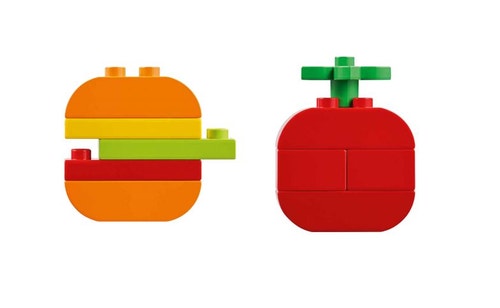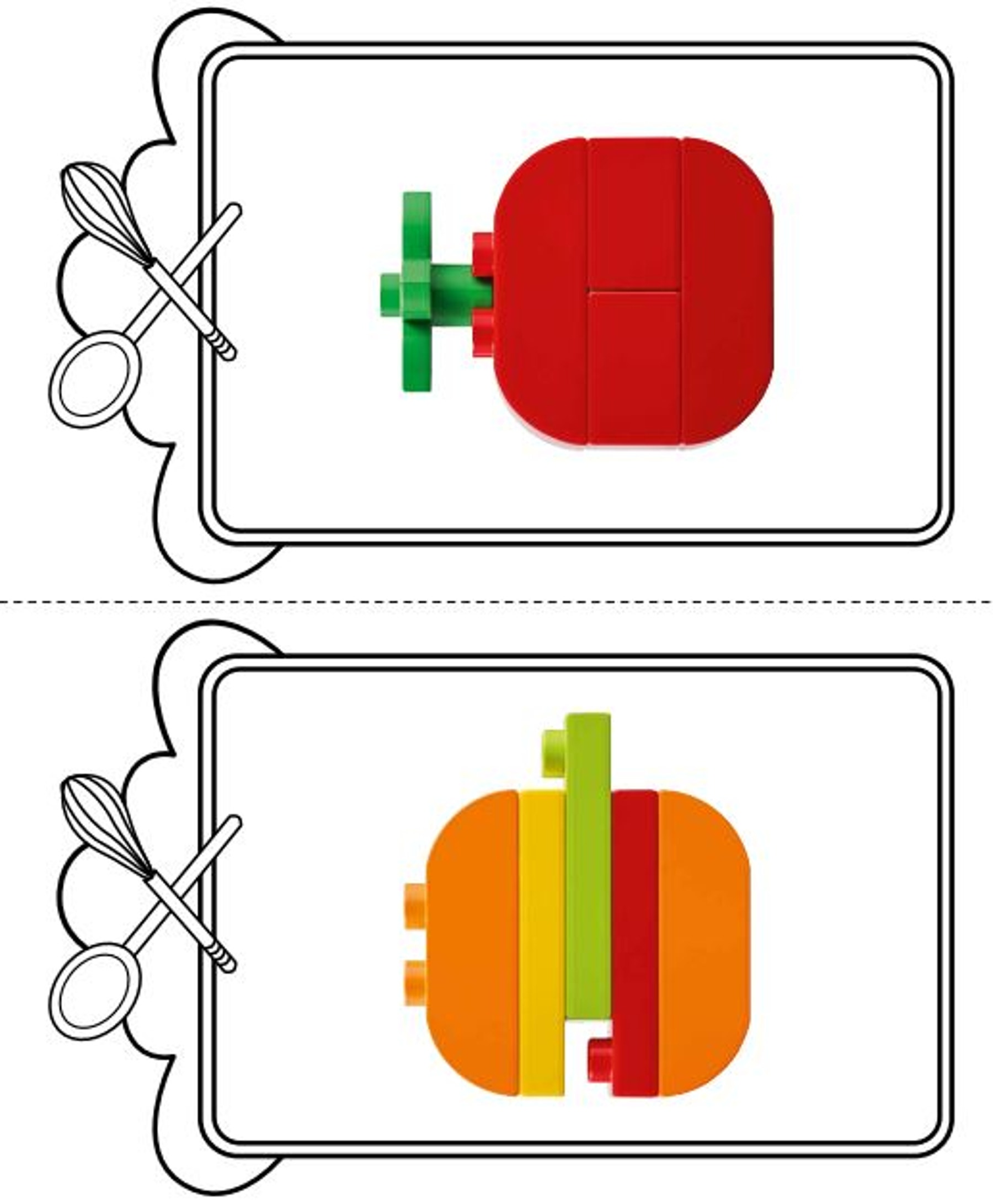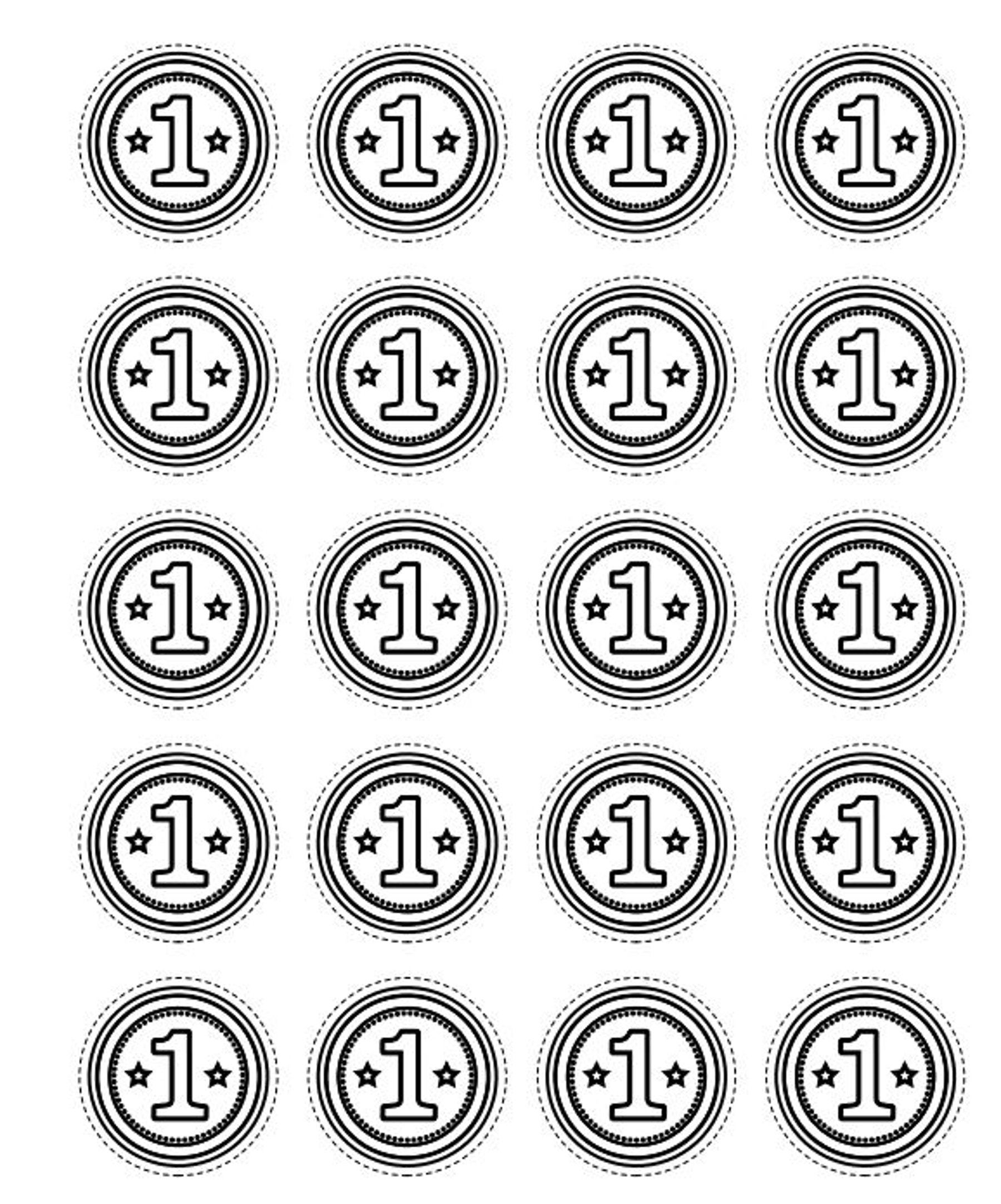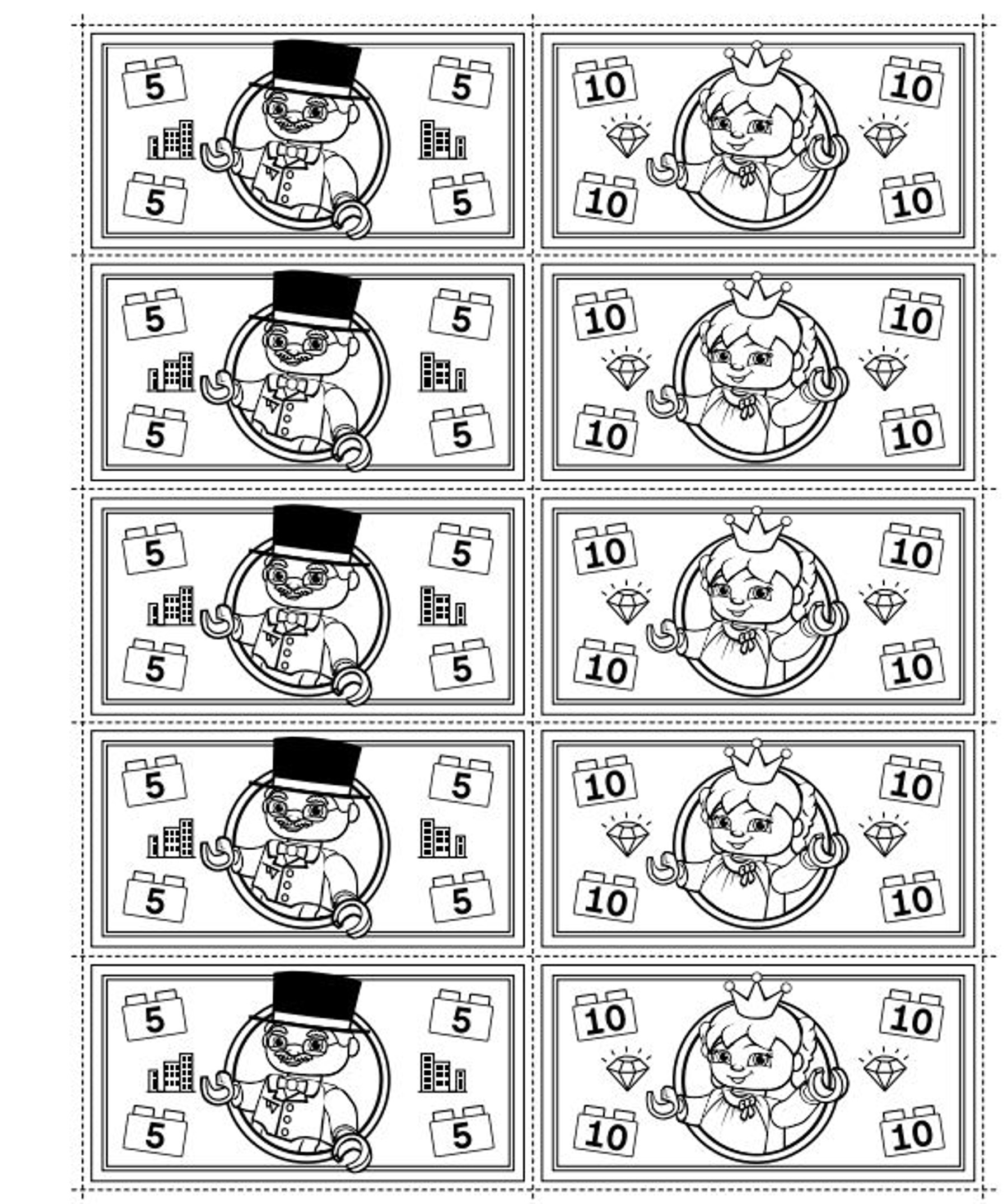Trading Bricks
The objective of this lesson is for children to explore trade and money and to follow the sequence of events while playing a game

Connect
- Ask the children to recall when they used the coin bricks or play money to buy food items.
- Facilitate a discussion about trade. Explain that when a person pays with money, they are trading that money for the item.
- Ask: How did people get the items they needed before money was invented?
- Wait for answers, then explain that people can trade one item for another and that people did this a lot before coins and paper money were invented.
- Have the children take turns role-playing how to barter using various items in the classroom.
Construct
- Preparation: Before this activity, collect all the bricks used in the four printable model cards and place them in an opaque bag or container.
- Tell the children that they are going to play a game in which they will need to make trades in order to build a food item.
- Hand out one printable model card, five randomly selected bricks, and two coin bricks to each child.
- Ask the children to see whether any of their bricks are the ones needed to build the food item shown on their individual cards, and to identify which bricks they are missing.
- Ask them to walk around to the other children, find who has the bricks they need, and trade for them.
- Explain that sometimes they might not have a brick to trade with the child who has the brick they need, but they can trade a coin brick for it.
- Help the children make their trades until each child has the correct bricks, then encourage them to build their models.


Contemplate
- Facilitate a discussion about the game.
- Consider asking questions like:
- How did you find the bricks you needed?
- Did you help others get the bricks they needed?
- Is it easier to trade bricks or trade money for bricks?
- Talk to the children about fair trades. Explain that both people making a trade should feel that they are getting value (i.e., what they need).
Continue
- Explain that people also get paid for performing services like cleaning the house, mowing the lawn, or washing the windows.
- Ask the children to help you create a classroom chores chart and decide how much each chore is worth. Use the printable money to pay the children when they complete the chores.
- Set up the café again and encourage children to use their hard earned money to buy food from the café. Have some of the children play the role of the cooks and build the food items.

Did You Notice?
Observing the following skills can help you monitor whether the children are developing the necessary competencies in math.
- Counting using number names, and beginning to recognize the number of objects in a set
- Sequencing numbers or events
- Recording simple data in a chart or graph
교사 지원
Children will:
- Match items by one-to-one correspondence
- Count and recognize the number of objects in a set
- Explore trade and money
- Follow the sequence of events while playing a game
For up to 4 Children
Scissors
An opaque bag or container that can hold 20 LEGO® DUPLO® bricks
The Mathematics guidelines from the National Association for the Education of Young Children (NAEYC) and HeadStart have been used to develop the Café+ lessons.
Please refer to the for an overview of the learning values referenced throughout this Teacher Guide.
The learning goals listed at the end of each lesson can be used to determine whether or not each child is developing the relevant early math skills.
These bullet points target specific skills or pieces of information that are practiced or presented during each lesson.




